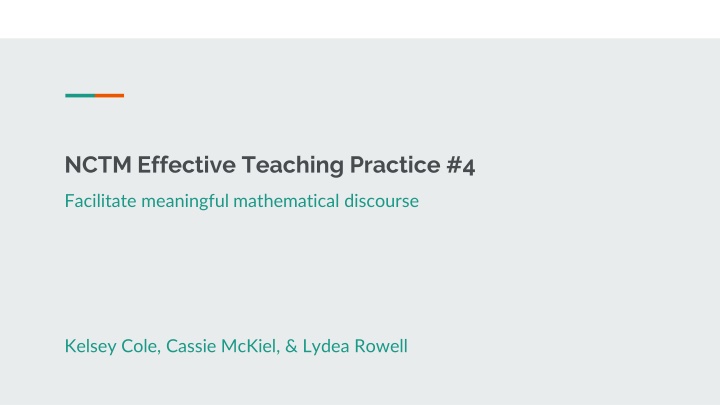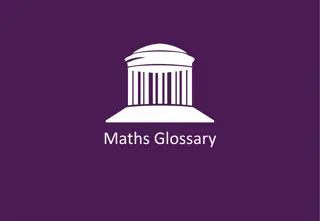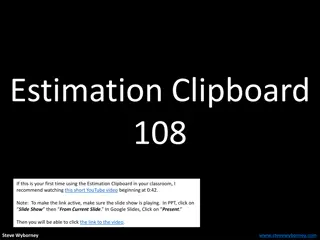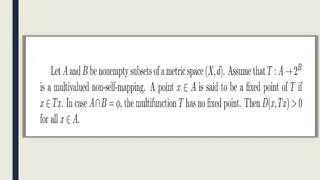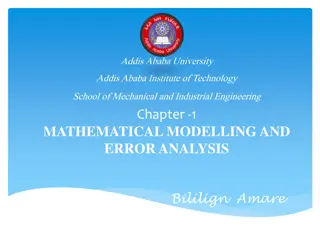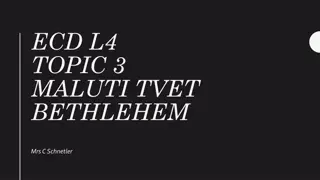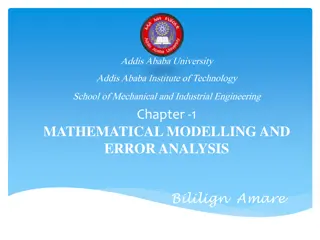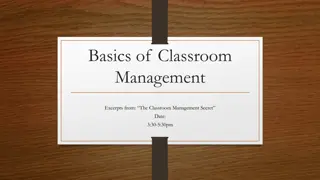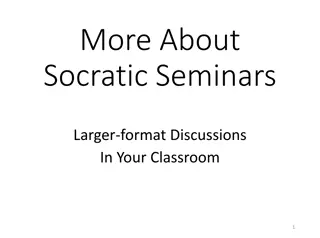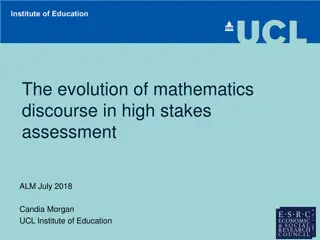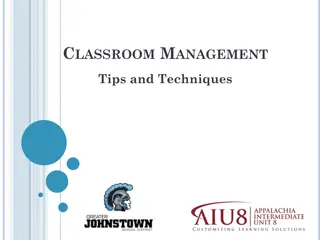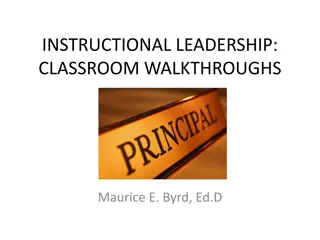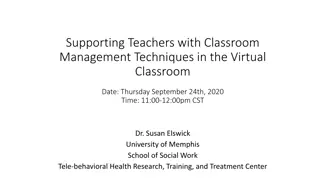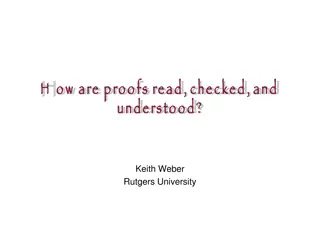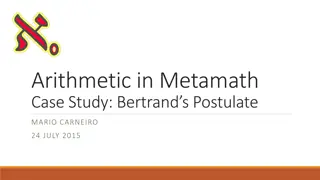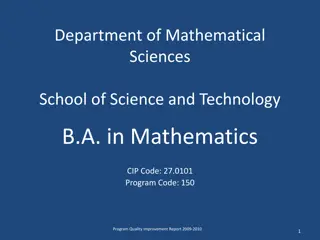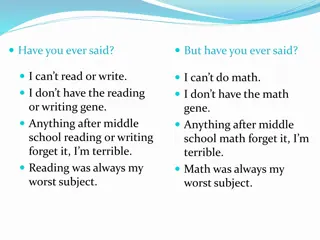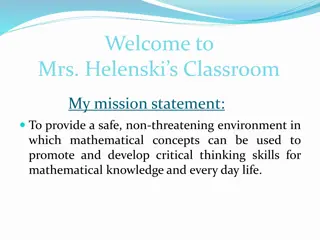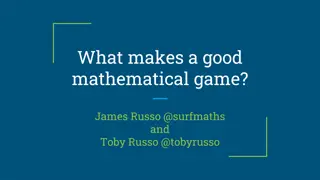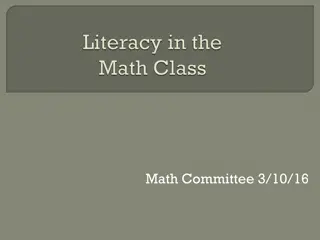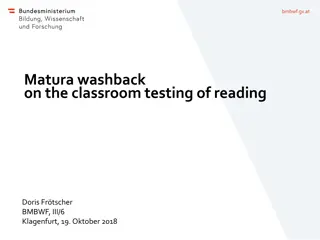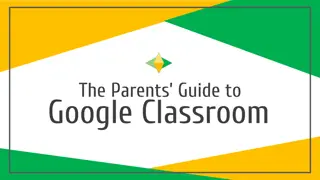Enhancing Mathematical Discussion in Classroom
Facilitating meaningful mathematical discourse in the classroom involves promoting reasoning, problem-solving, and student-led discussions to deepen conceptual understanding and prepare students for future challenges. By encouraging students to use various tools to articulate and defend their ideas, this practice fosters a rich learning environment where students compare information, make connections, and build new knowledge collaboratively.
Download Presentation

Please find below an Image/Link to download the presentation.
The content on the website is provided AS IS for your information and personal use only. It may not be sold, licensed, or shared on other websites without obtaining consent from the author.If you encounter any issues during the download, it is possible that the publisher has removed the file from their server.
You are allowed to download the files provided on this website for personal or commercial use, subject to the condition that they are used lawfully. All files are the property of their respective owners.
The content on the website is provided AS IS for your information and personal use only. It may not be sold, licensed, or shared on other websites without obtaining consent from the author.
E N D
Presentation Transcript
NCTM Effective Teaching Practice #4 Facilitate meaningful mathematical discourse Kelsey Cole, Cassie McKiel, & Lydea Rowell
What does facilitating meaningful mathematical discourse mean? Discourse is the mathematical communication that happens in the classroom. Key ideas: Focuses on tasks that promote reasoning and problem solving. Develops conceptual understanding of meaningful learning. Builds on and honors student thinking. Keeps mathematical ideas at the heart of the lesson prominent in class discussions. Provides students with opportunities to talk with, respond to, and question one another in ways that support the mathematical learning of all students in the class. Aims to make sure the teacher isn t the dominant speaker Build a shared culture where students lead conversations themselves. Teaching these new skills to students allows teachers to access, monitor, and evaluate students mathematical understanding and development.
What are the benefits of facilitating meaningful mathematical discourse Learn to use the tools such as words, symbols, diagrams, physical models, and technology to present and defend their ideas. Helps develop deep conceptual understanding. Encourages speaking and listening, appropriately disagreeing, and explaining thinking. Prepares students for the demands of their future. Helps the brain make connections, which makes the subject more meaningful. Allows students to compare the new information with what is already known in order to build new knowledge.
An example of facilitating meaningful mathematical discourse Within a video where a teacher asked their students to solve a math problem where they are asked to find how to equally give 10 sandwiches to 4 people the teacher has the students think about the question and try and come up with a solution for a few minutes going around helping them if needed. All students come up with different solutions that they bring to the rug and they go over the said strategy with the teacher who draws the solutions they created up on a board and the teacher has them think about how another student is solving the problem and ask each other questions while also trying to figure out if that method was correct or not. They have a full class discussion where they are going over a problem in multiple different ways and having them educate themselves with their own thinking but also the students and peers around them. Teaching Students to Prove Their Mathematical Thinking through Questions, Charts, and Discourse Mona Iehl's third-graders at Polaris Charter Academy in Chicago develop their own understanding of how to solve math problems through cognitive guided instruction. They have time to grapple with problems and are guided to new understandings by Iehl's strategic use of questions. Following a period of grappling, students engage in discourse with each other and then work to prove their mathematical thinking to the group. Licensed under CC BY-NC-ND 4.0 : https://creativecommons.org/licenses/by-nc-nd/4.0/
Supporting the use of facilitating meaningful mathematical discourse What can the teacher do? Anticipating students responses to challenging math questions and pose purposeful questions Monitoring students responses to tasks Help track progress, connect student approach and reasoning Selecting particular students to present math work in whole class discussions Showing different student approaches and looking for solution strategies for whole class analysis and discussion Varied representations of approaches Connecting different students responses and connect their responses to key mathematical ideas What can the student do? Present and explain ideas in pair, small group and whole class discourse Listen to reasoning of peers Asking questions Identify how different approaches to solving a task are the same and how they are different
Are there any questions about this NCTM Effective Teaching Practice?
Sources - Teaching Students to Prove Their Mathematical Thinking through Questions, Charts, and Discourse Facilitating Meaningful Math Discourse Math Talk: The Value of Discourse in Math Class and Ways to Encourage it - State Education Resource Center Effective Mathematics Teaching Practice 4: Facilitate Meaningful Mathematical Discourse - - -
